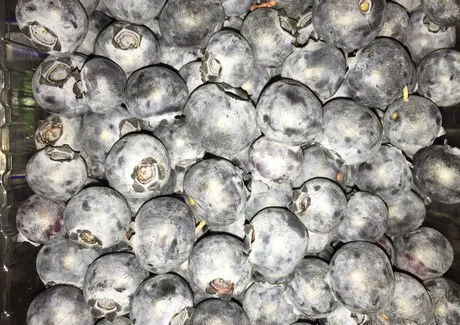There’s a heavy supply of blueberries thanks, in part, to one country expanding its production.
“There’s an abundance of blueberries. Peru has bigger production this year and dumping a lot into North America. The North American market is their main focus because there’s been a 20 percent increase in consumption of blueberries per household,” says Franco Maggiore from Montreal, Que.-based Thomas Fruits et Legumes.
The Peru season began in November and should likely finish between the end of February and early March. “They put in extra acreage for blueberries and they seem to have done it on both the south and north side so they can cover most of the months of the year. Then they can compete with both Argentina and Chile,” says Maggiore. “Argentina doesn’t have as great quality for blueberries as Peru and Chile was cold at the start and then heated up very fast. Peru has a better climate—especially this year—and better soil and vegetation for blueberries.”
On top of Peru’s extra acreage, Argentina and Chile also seemed to have solid supplies of blueberries, adding to the heavy supply overall of blueberries.

Demand meeting pricing
And while demand for berries was already good, it’s matching the heavy supplies and responding to pricing. “Pricing is very cheap which means demand is very strong. There is no overstock—just a continuous flow because pricing is so low,” says Maggiore. “For example, pricing is two pints of berries for $5. And it’s being compared to the summertime local deal—you’re getting a better deal this time of year right now than the summer local deal.” In total, Maggiore estimates prices right now are down 20 percent compared to last year.
He also attributes strong demand to strawberry sales. “They don’t have enough strawberries right now so people are looking at blueberries,” he adds.
However, things will likely change next month. “I think demand would probably tighten up at the end of February when Peru is just about over and Argentina and Chile are also finishing up,” he says. “It will be just before the Florida season starts, though I don’t think we’ll see much there because of all of the temperature issues in Florida. It looks like it’ll be a late start to everything they have and I think they may start in April.”
For more information:
Franco Maggiore
Thomas Fruits et Legumes
Tel : +1 (514) 389-3815
franco@thomasfruits.com
www.thomasfruits.com
